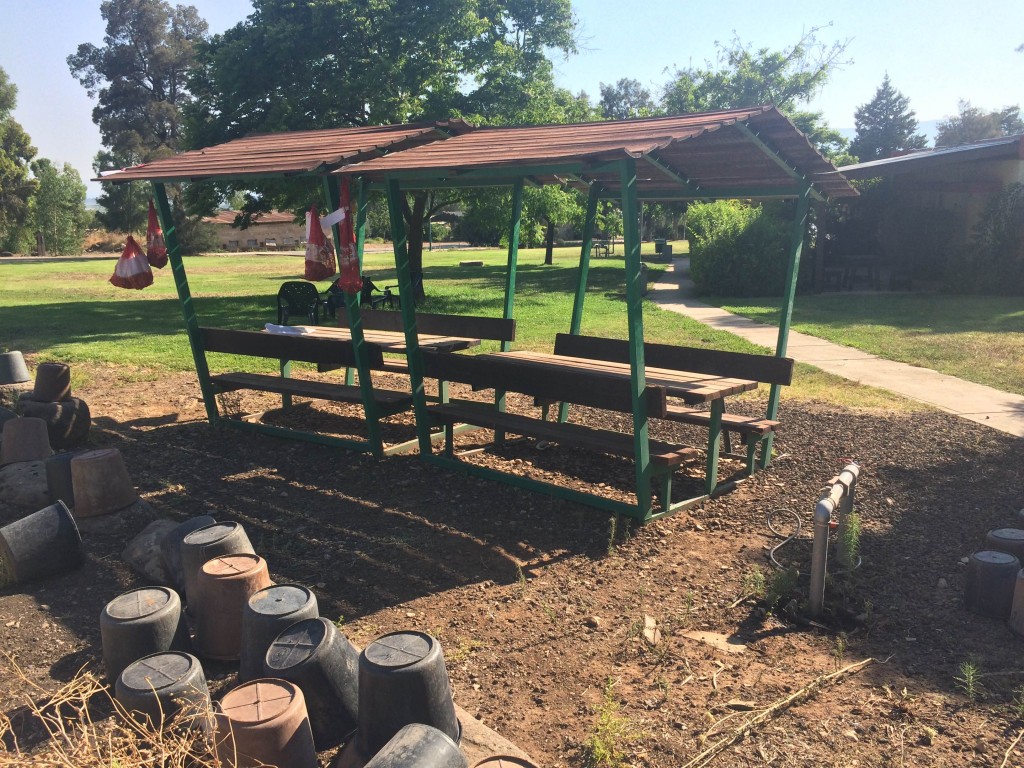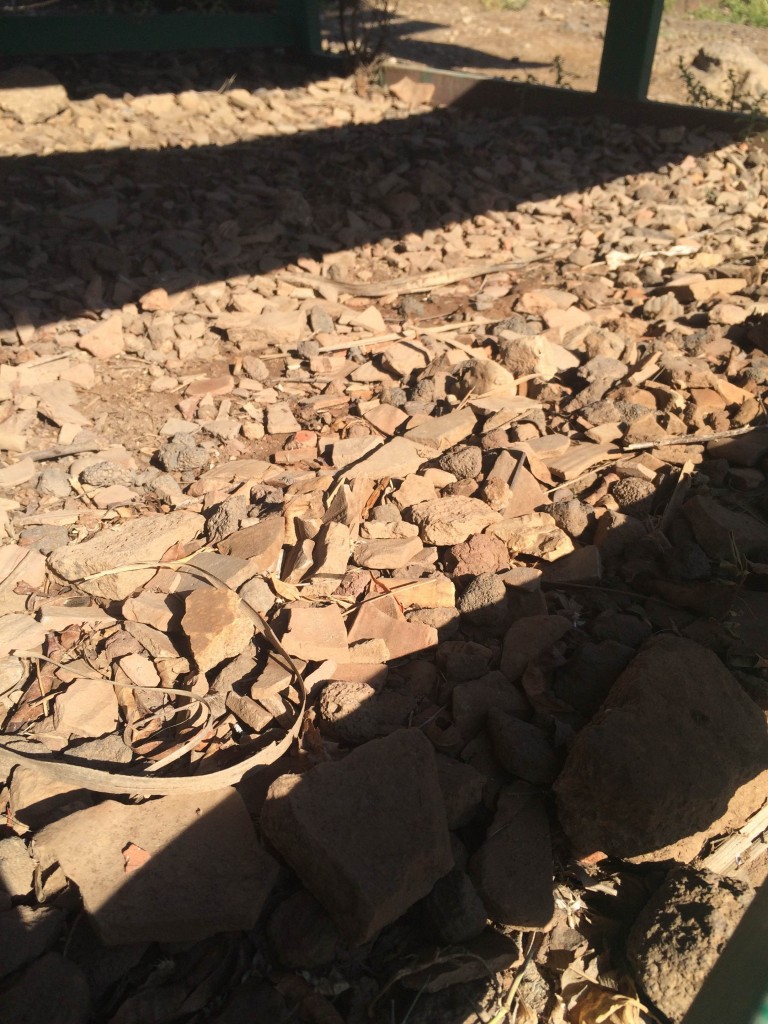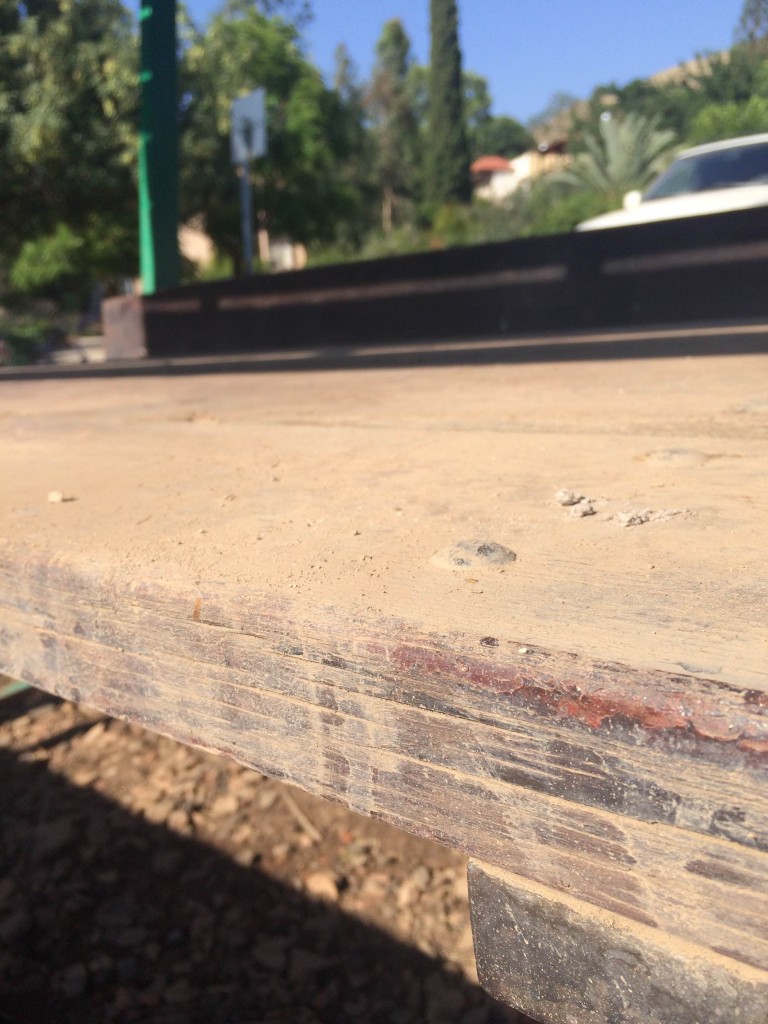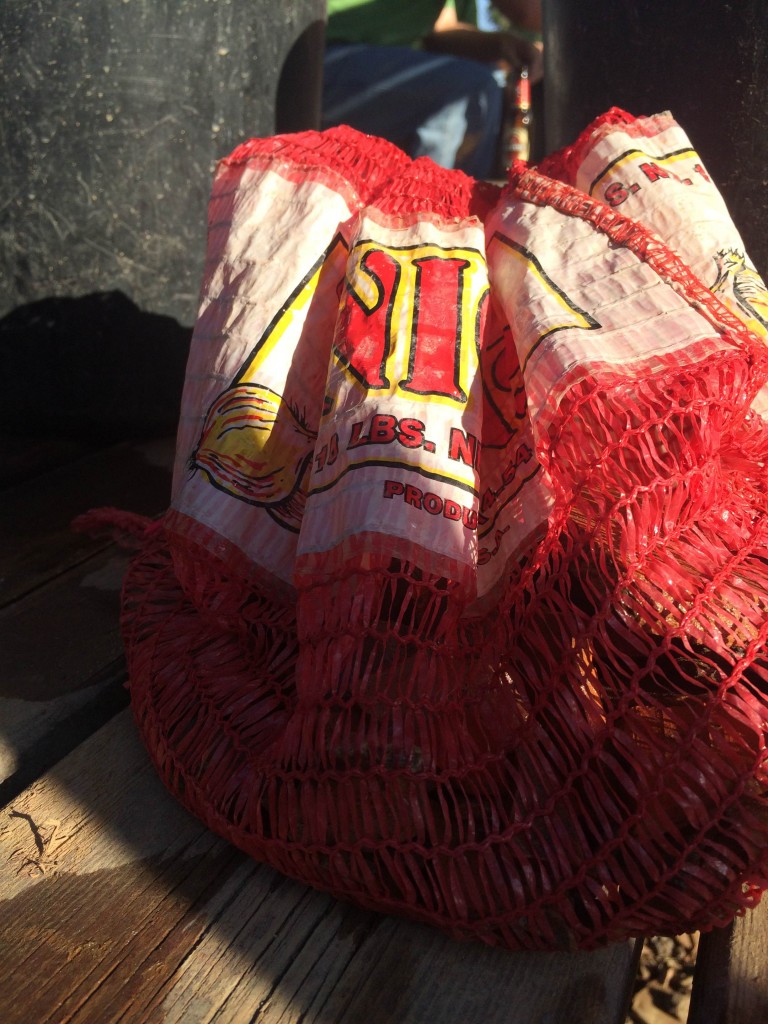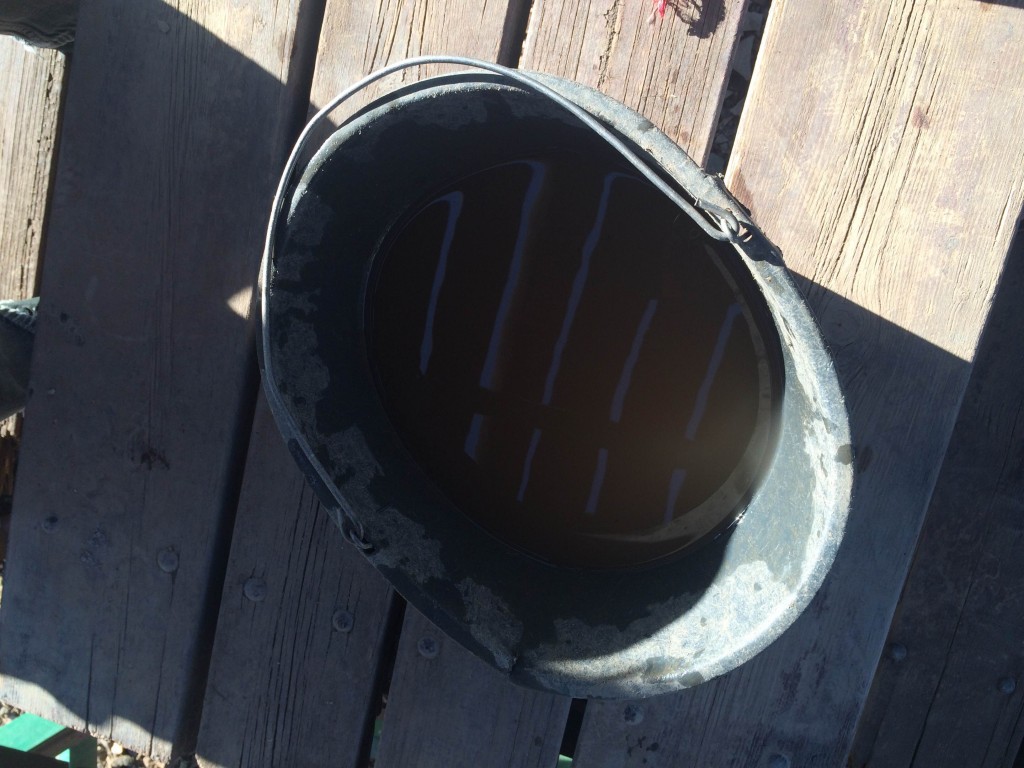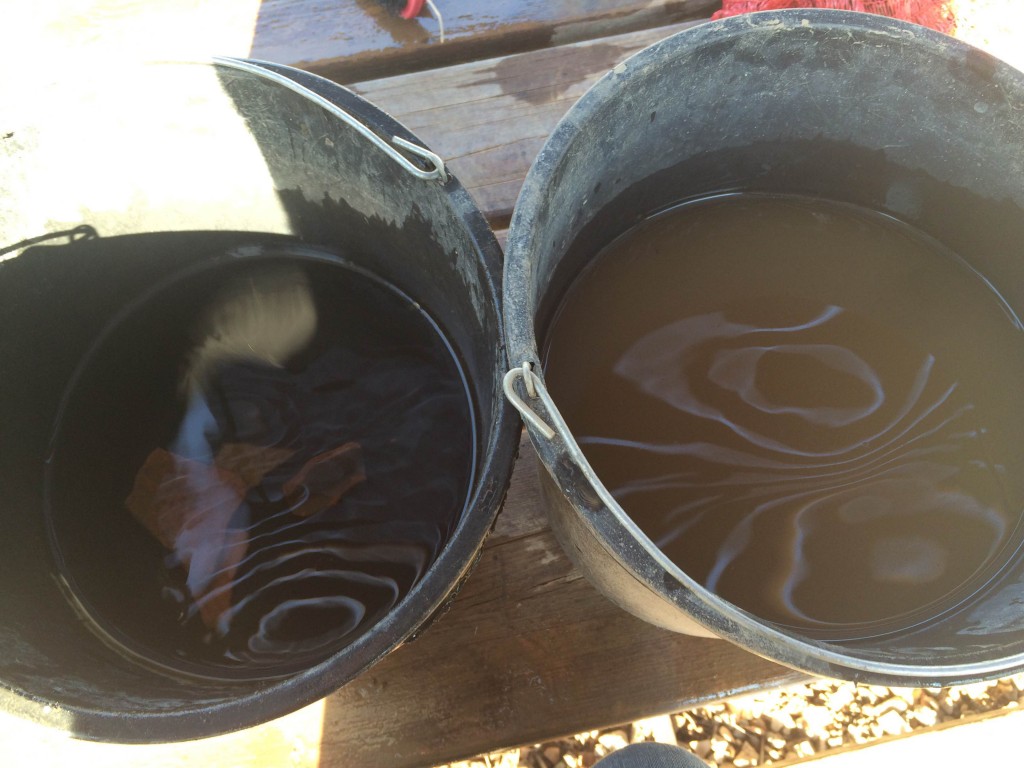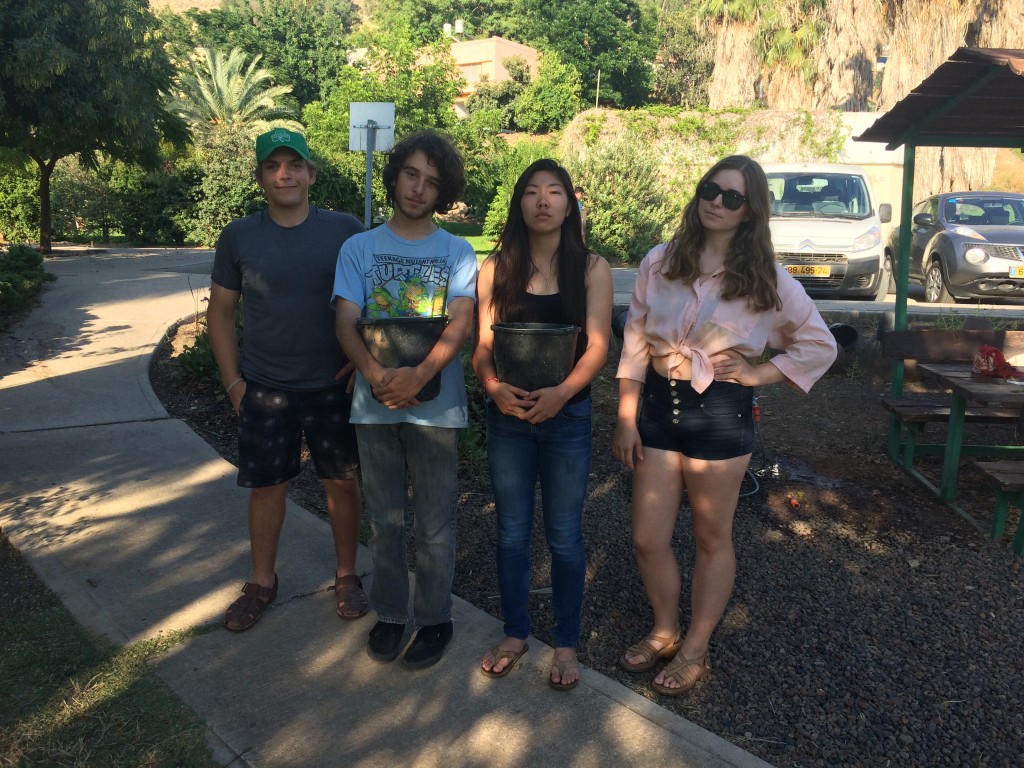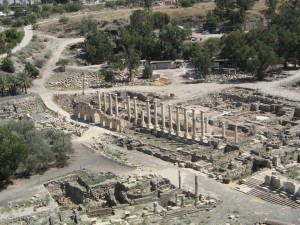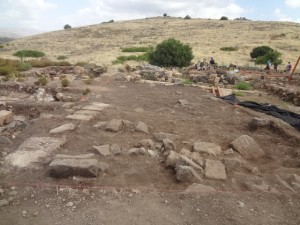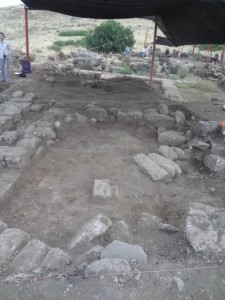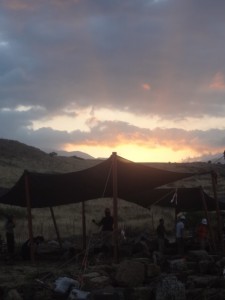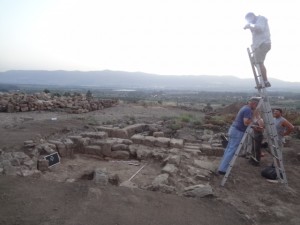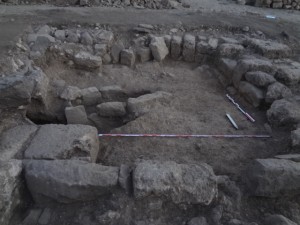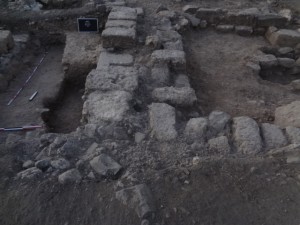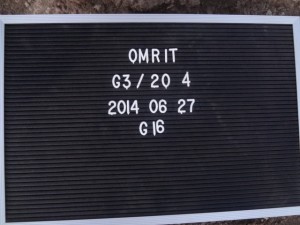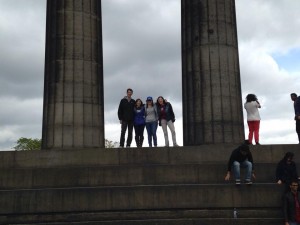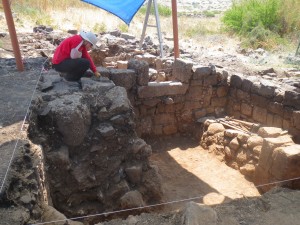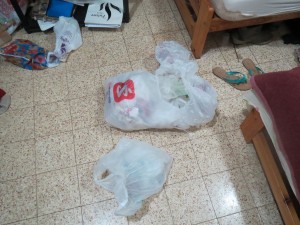Archaeology is hard work. Hard work, in the hot sun, early in the morning. What we do here takes energy, and this energy relies on a steady source of fuel. Much of the time, students at Omrit live meal to meal. In many ways the food served at Kibbutz Kfar Szold is one of the most important elements of a successful dig season. For that reason, I feel compelled to say at least a few words about what we put in our bodies during a typical day on the dig.
On a normal day, we eat four meals. One consumes the first of those between 4 and 5am, depending on when that person wakes up and gets to the bus. This meal, appropriately titled “breakfast,” is one that we each prepare for ourselves the night before at dinner. Most students fashion some sort of peanut butter sandwich for their morning sustenance. Occasionally there are outliers–students who choose to forego the sandwich option in favor of another, typically healthier, snack purchased at the kibbutz store–but students differ mainly in how they choose to accessorize their peanut butter sandwich. Some opt for a smooth, sugary top layer of strawberry jelly, others spread a thick layer of date spread or apricot jam. A select few accompany the peanut butter with a sumptuous layer of faux-Nutella chocolate spread, ensuring that they will arrive at the site thoroughly energized.

A full sandwich with turkey, cucumbers, tomatoes, hard-boiled eggs, a bit too much mayonnaise, and pepper; a slice of fresh-cut cantaloupe, and a savory potato pastry. Served with hot black coffee.
The next meal arrives in the field around 8:30. We call this meal “second breakfast,” though I can’t say that first breakfast is ever substantial enough to be called an actual meal. Second breakfast gives us our first real nourishment of the day–man cannot live on extra gluten-y white bread, processed pulverized nuts, and artificially sweetened fruit spread alone. A typical meal consists of a bread roll, sliced cucumbers and tomatoes, hard-boiled eggs, and either lunchmeat or cheese. Few eat these items piecemeal, choosing instead to construct some sort of sandwich, usually seasoned with a combination of mayonnaise, Tabasco, and dirt. Try as we might, the execution of these sandwiches is usually somewhat spotty. Occasionally, a ray of light will descend from heaven, bestowing upon us heaven’s bounty in the form of egg salad, tuna, or savory flaky pastries (see photo). Fruit is normally served as dessert, and hot beverages abound–or at least as long as there’s hot water in the heater.
Lunch is far less predictable. We eat lunch between 1 and 2pm in “The Factory,” a name we have given it for its normal use as the cafeteria for employees of Lordan, a tube coil manufacturer located on the kibbutz. I welcome this variety, since the daily routine tends to take a rough toll on one’s sanity. Still, the moment this variety transforms into mystery, the lunch experience can have an entirely different feel, the excitement of a novel culinary experience turning into the dread of uncomfortable change. Last year, I picked out what appeared to be a delicious chicken dish, the roughly cut strips of chicken braised in an earthy yellow sauce with dark gray olives. What a joy to be in a Mediterranean country where they serve olives in everything! I was truly fortunate. It was only when I had eaten four or five olives that I noticed the interweaving network of veins and arteries that, irrespective of whether they were figments of my imagination, were clearly staring at me from their place on my fork. I grudgingly ate the rest of this now unpalatable amalgam of chicken and kidneys, reminding myself all the while that there was really nothing wrong with the taste of the dish. Even though I would have no problem eating kidneys when they were clearly labeled, the surprise of this instant was enough to do me in.

A hunk of roasted chicken, couscous, cucumber and onion salad, a piping hot savory meat pastry, a slice of watermelon, and a tiny glass of water.
That being said, lunches on the kibbutz are nutritious and enjoyable. We first choose entrées, each of the five options characterized as fish, chicken, or “meat,” the latter providing a healthy dose of mystery along with the expected fat and protein. My personal favorite is the “chicken balls”–hollowed out spheres of chicken stuffed with rice and ground beef. Lather on the tahini and you’re good to go. Along with the entrée, we each choose several sides, typically rice or couscous, potatoes, cucumber salad, hummus or baba ghanoush. All of this gets washed down with either water or a vaguely medicinal pink beverage.
Dinner comes at 7:30pm, which is shockingly late given that an excavator’s typical bedtime is between 8:30 and 9 o’clock. I’m convinced this doesn’t give the food enough time to digest, but I suppose there’s no getting around our crazy schedule. Dinner is catered by a neighboring kibbutz, so the food is prepared especially for us. The setup is essentially the same as lunch–a few meat entrées, rice, hot vegetables, soup, and several cold side dishes, the most important being hummus. Meat dishes are typically pretty simple: chicken legs in a mild oily marinade, lamb patties in a thick brown glaze, what appears to be a dense beef stew drained of most of its broth, and the ubiquitous chicken schnitzel. Sides include hummus, tahini (which I place above hummus in the condiment hierarchy, second only to the powerful chunky emerald sauce which I insist on calling “spicy green stuff,” or SGS for short), a simple green salad with delicious cherry tomatoes, red cabbage salad, and sliced pickles. I find this meal the most fulfilling, but I find it strange how quickly it gets eaten. Our food tends to disappear as quickly as it gets on our plates, which demonstrates either how hungry we are or how much we want to get to bed (probably both, honestly).

A cross section of some unknown animal, potato salad, green salad, pickled vegetables topped with SGS, and soup, served with water in an impressively flimsy plastic cup.
Students and staff tend to speak ill of the food on the dig, but at the end of the day it’s the only thing keeping us going. All things considered, our food is pretty damn good, and the situation has been and could be much, much worse; although I wasn’t around to experience it, I’ve heard many a story about the now-mythical corn pone served in years past. Despite what you may have gathered from the tone of this blog entry, I really enjoy the food served at Omrit, and not just because I prefer it to eggless cornbread.

